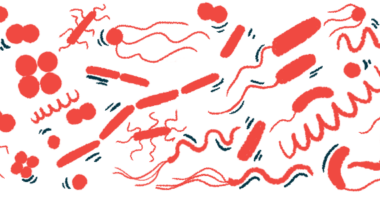Restarting Taltz After Withdrawal Reduces axSpA Activity: Trial Data
Study provides new information about treatment interruptions, researchers said

Almost all people with axial spondyloarthritis (axSpA) who had worsening disease severity after stopping Taltz (ixekizumab) saw improvements after restarting the therapy, according to data from a Phase 3 withdrawal study.
The majority (71%) reached a state of disease remission after restarting treatment.
These findings provide important information about healthcare decisions when treatments are interrupted, either due to elective surgery, infection, or at the patient’s request, the researchers said.
The withdrawal study, “Recapture and retreatment rates with ixekizumab after withdrawal of therapy in patients with axial spondyloarthritis: results at week 104 from a randomised placebo-controlled withdrawal study,” was featured in the Annals of the Rheumatic Diseases.
Axial spondyloarthritis is a form of arthritis marked by inflammation in the joints of the spine, pelvis, and chest. Ankylosing spondylitis is a severe subtype of axSpA, indicated primarily by sacroiliac joints inflammation, where the pelvis meets the base of the spine.
Approved treatments work by blocking the action of either TNF or interleukin-17a (IL-17a), pro-inflammatory immune signaling proteins that play a role in developing axSpA.
Guidelines recommend that once a patient reaches a state of remission or low disease activity (LDA), these medications may be tapered to a lower maintenance dose. In some cases, treatment must be paused for elective surgery or due to infection, however.
Withdrawal studies suggested TNF blockers require continuous treatment because discontinuing them may lead to a loss of effectiveness when they’re restarted.
To determine the impact of withdrawing and restarting IL17a blockers, researchers at the Amsterdam Rheumatology and Immunology Center, the Netherlands, analyzed data from the COAST-Y withdrawal study (NCT03129100).
COAST-Y was a Phase 3 open-label extension study that evaluated the impact of the withdrawal of the approved anti-IL-17a medication Taltz, which was developed by Eli Lilly and is administered under the skin. The study enrolled 773 axSpA patients who participated in three previous Phase 3 clinical trials that supported the therapy’s approval.
Primary COAST-Y results showed axSpA patients who continued treatment with Taltz were significantly less likely to have disease severity worsening, or a flare, as well as a delayed time-to-flare, compared with those who withdrew. Notably, 35.8% of those who received a placebo never had a flare.
This analysis focused on the impact of restarting Taltz after withdrawal.
COAST-Y began with a 24-week (about six months) lead-in treatment period with either 80 mg of Taltz every two weeks (Q2W) or every four weeks (Q4W).
After 24 weeks, those who achieved remission, as determined by low ankylosing spondylitis disease activity scores (ASDAS), entered the randomized withdrawal-retreatment period (RWRP). Here, participants were randomly assigned to blindly continue their Q2W and Q4W regimens or withdraw to a placebo over 80 weeks (about 18 months).
During the RWRP phase, 155 patients who had a flare, as indicated by increased ASDAS scores, were then treated with open-label Taltz at the same lead-in dose. Researchers reported their recapture rates, low disease activity or remission following open-label Taltz treatment after 104 weeks (two years).
Among the 53 patients assigned a placebo in the RWRP — Taltz withdrawal — 28 (56%) had a flare and were retreated. At two years, 27 (96%) of them regained low disease activity, four before retreatment and 23 within 16 weeks (four months) of retreatment.
Complete remission after two years occurred in 20 of the 28 (71%) placebo-treated patients who had a flare, with one achieving remission before retreatment, 14 within four months, and five after four months of retreatment.
Among 102 patients who remained on either Taltz regimen, 13 (12.7%) had a flare and received open-label Taltz, with 12 (92%) regaining low disease activity after two years. Seven reached low activity before open-label treatment, two within four months, and three after four months. Complete remission occurred in five of them, one before open-label treatment, three within four months, and one after four months.
Most patients who achieved low disease activity or better at week 24 sustained that through two years. Also, sustained higher ASDAS scores throughout the 24-week leading period were associated with a future flare.
Participants who had symptoms that lasted five years or more before taking part in COAST-Y were more likely to have a flare if they withdrew to a placebo than those who continued on Taltz.
“The vast majority of patients withdrawn from [Taltz] to placebo recaptured at least LDA and over half of those patients met the criteria for [remission] with [Taltz] retreatment,” the researchers wrote. “These data may provide support to patients who require interruption in active therapy.”







